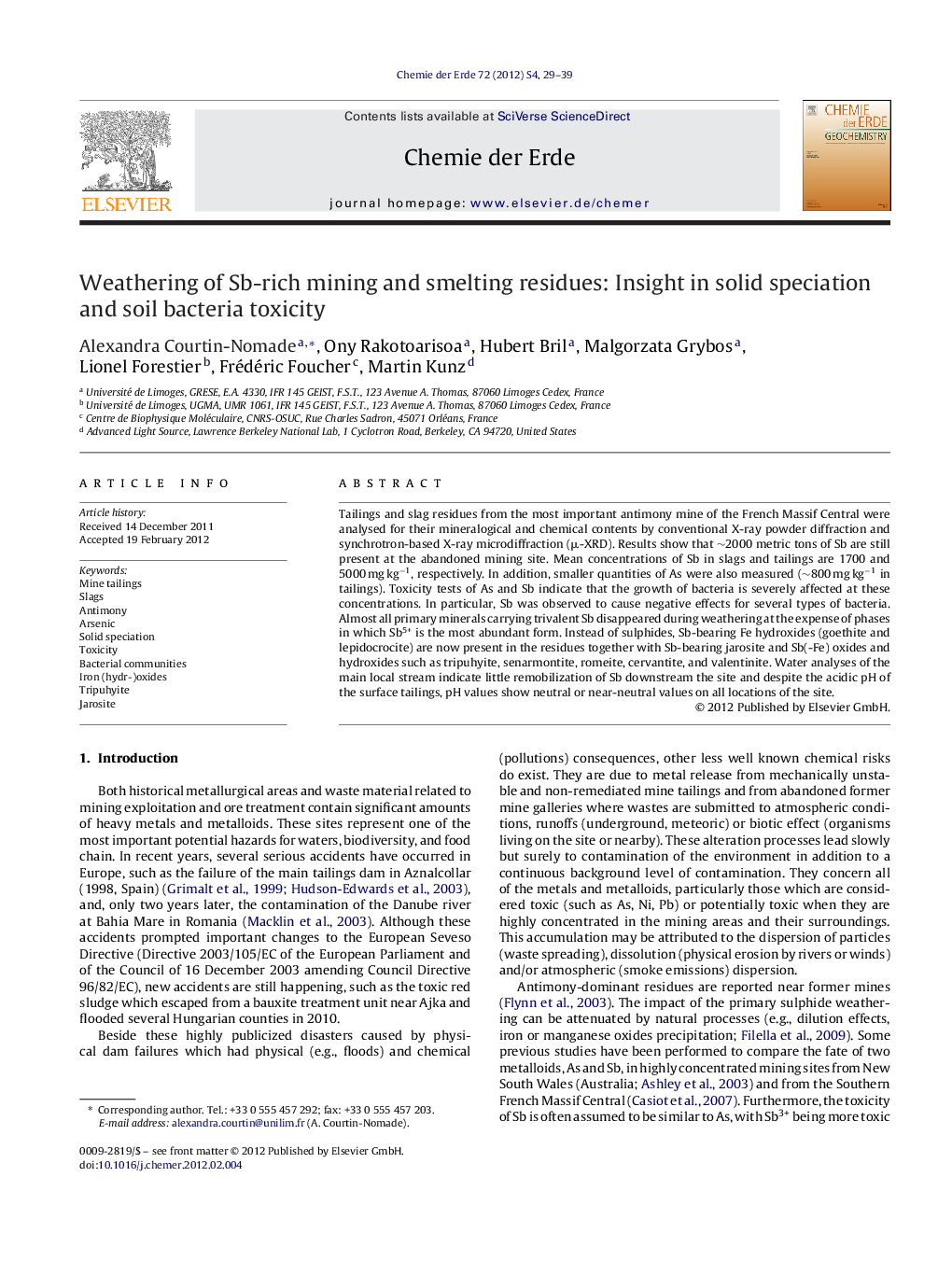| Article ID | Journal | Published Year | Pages | File Type |
|---|---|---|---|---|
| 4406858 | Chemie der Erde - Geochemistry | 2012 | 11 Pages |
Abstract
Tailings and slag residues from the most important antimony mine of the French Massif Central were analysed for their mineralogical and chemical contents by conventional X-ray powder diffraction and synchrotron-based X-ray microdiffraction (μ-XRD). Results show that â¼2000 metric tons of Sb are still present at the abandoned mining site. Mean concentrations of Sb in slags and tailings are 1700 and 5000 mg kgâ1, respectively. In addition, smaller quantities of As were also measured (â¼800 mg kgâ1 in tailings). Toxicity tests of As and Sb indicate that the growth of bacteria is severely affected at these concentrations. In particular, Sb was observed to cause negative effects for several types of bacteria. Almost all primary minerals carrying trivalent Sb disappeared during weathering at the expense of phases in which Sb5+ is the most abundant form. Instead of sulphides, Sb-bearing Fe hydroxides (goethite and lepidocrocite) are now present in the residues together with Sb-bearing jarosite and Sb(-Fe) oxides and hydroxides such as tripuhyite, senarmontite, romeite, cervantite, and valentinite. Water analyses of the main local stream indicate little remobilization of Sb downstream the site and despite the acidic pH of the surface tailings, pH values show neutral or near-neutral values on all locations of the site.
Keywords
Related Topics
Physical Sciences and Engineering
Earth and Planetary Sciences
Geochemistry and Petrology
Authors
Alexandra Courtin-Nomade, Ony Rakotoarisoa, Hubert Bril, Malgorzata Grybos, Lionel Forestier, Frédéric Foucher, Martin Kunz,
